|
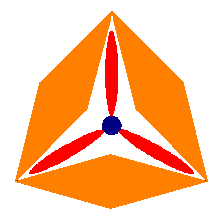 |
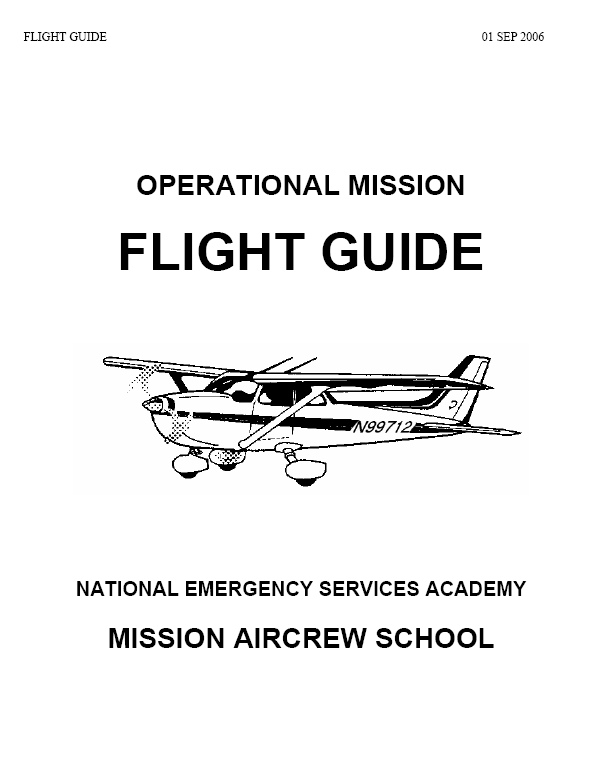
OPERATIONAL MISSION FLIGHT GUIDE
The Operational Mission Flight Guide, commonly called the "Inflight
Guide," is the culmination of the better part of a decade's work by many
parties. A highlight of the revisions are listed on page ii
(the inside cover) of the guide. Previously released major
editions include November 2002 and July 2005. A June 2006 version
may also be in circulation. The current online edition is July 2007.
You are welcome to print out your own copies of the guide subject to
the license, terms and restrictions listed below and in accordance with
this site. Its really not that bad, though! We are working
on publishing pre-printed copies of the Inflight Guide, but generally
the quickest and easiest was is to print them yourselves. See
below for how to do this.
Here are a few things to consider when using the guide.
- This is a fairly large file! Download time with a 56k modem may
be well over half an hour.
- THIS A 'FINAL' VERSION OF THE GUIDE! That does not mean future
improvements will be made. It is, however, somewhat permanent.
Collaboration with additional members of the National Emergency
Services Academy Mission Aircrew School is still underway. Your
input is always appreciated and welcome for future versions.
Revisions tend to come out during NESA. The guide has a list
of changes so you can pen-and-ink any differences if necessary.
- Especially if you have a slower computer and/or connection
(dialup modem), you may wish to RIGHT CLICK on the link above and
use the SAVE AS feature to place the document where you can access
it once it downloads.
- This guide may be given the widest dissemination possible, but
may not be altered. It is considered an MAS publication. You are
allowed to insert a local procedures supplement at the end of the
guide if necessary.
- The guide is hefty in length--nearly 150 pages. If you're sure
you don't need a page, consider omitting it. A wise person once
said, however, "better to have and not need than to need and not
have."
- It might be a good idea to print out a copy to keep in your
airplane, your squadron's airplane, your ground team gear, your Incident Commander
kit, and your flight bag. You get the idea.
- Many Ground Teams have found the information in this guide
useful as well--especially the air to ground coordination
(communications) section.
- Check the DOWNLOADS portion of this website for additional
materials that you may find useful. In particular, if you like the
IFG you may also like the
C-172R checklist. Use similar printing techniques on yellow
card stock for the best results.
- Be careful if you use an inkjet printer to make your guide.
This ink is water soluble and will be completely ruined if it gets
wet.
- The CAP ES Resources™ Website originally intended to sell these inflight guides for donations as a squadron fundraiser. This right
is exclusively reserved by the publisher of the CAP ES Resources™
Website. All other license terms
apply as listed on this site; all rights reserved.
- This guide is not instructional nor regulatory in nature.
Aircrews must be familiar enough with the various items within
this guide to use it for reference inflight
.
- Deference must be given to higher headquarters Where
contradicting regulatory guidance exists. For example, if the
14 CFR (the "Federal Aviation Regulations")
or CAP 60-1 affect operations as listed in this guide, ensure
compliance with those requirements
.
- Continued improvement on the inflight guide includes adding
information and eliminating items that are time-sensitive to change.
Official Use Only materials (such as frequencies) have been removed
from the guide so it may be downloadable to the public. We
suggest that you write this information by hand in your guide. This
allows the guide in its electronic format to be freely distributed,
but also puts the needed information at your fingertips.
- There are two basic methods of constructing your own copy of the
inflight guide. Below is the "arts and crafts" section.
|
CARD STOCK METHOD
- There are several
methods of printing your inflight guide. One
method that has been particularly effective is printing
the file in a "two up" format. That is, instead of
trying to print one copy of the guide, you print two
pages per sheet. 1,1 on the front, 2,2 on the
reverse, and so on and so forth. You then cut the
sheets in half -- this will yield TWO copies of the
guide. Next, punch holes in the sheets for
binding. Some individuals have preferred to punch
holes on top instead of on the side. Others still
have preferred a spiral or comb binding. If you
have a print house print out the guide for you, they can
do this for a few dollars per book. Experience has
shown that printing the guide on card stock should cost
about $5 - $10 apiece.
- If you use this method, your inflight guide will
look like the picture below.
- Card stock lasts much longer than normal paper and
doesn't require any sort of lamination or protection
(except for the cover)
- You will want to laminate the cover or make a
plastic cover for your inflight guide. See the
instructions for the plastic cover in the sheet
protector method section.
- Many types of lamination work; you may wish to try
clear contact paper because it will not have a harsh
glare that many other lamination products have.
- You may wish to laminate all of the standard forms
pages in this document. That way you can
write on the page with a wet-erase (overhead projector
type) marker and be able to erase it cleanly at the end
of a mission. It is suggested that you also
laminate the facing page or else the marker may rub off
on the unprotected page.
- You may also wish to insert tabs on the dividing
section pages to help you locate important items more
quickly.
- Optional: use multiple colors of card stock to help
find items quickly. As a standard, preflight
and communications should be in blue. Mission pages, the majority of the guide, are orange.
The Emergency Section (III) should be on red cardstock. Forms are
white (this allows easy use on the copy machine). Aircraft
checklist pages should be yellow.
- Optional: construct a plastic cover by using a heavy
plastic folder or a three-ring binder. Simply cut
two pieces of plastic to size and use a hole punch to
match the holes in the sheet protectors.
- Add three loose rings to hold the guide together.
- Many members have found that a spiral binding is
what they prefer. It makes it harder to add and
remove pages, but it makes the guide more book-like.
Most bind it this way on the side, but some like it
spiral bound on the top. If you choose to bind it
on the top, you will need to flip the reverses of those
pages.
- A local copy or printing store can do all of this
for you. If you print several, you may start to
save money due to economies of scale. Ask around
at your squadron to see who might chip in with you.
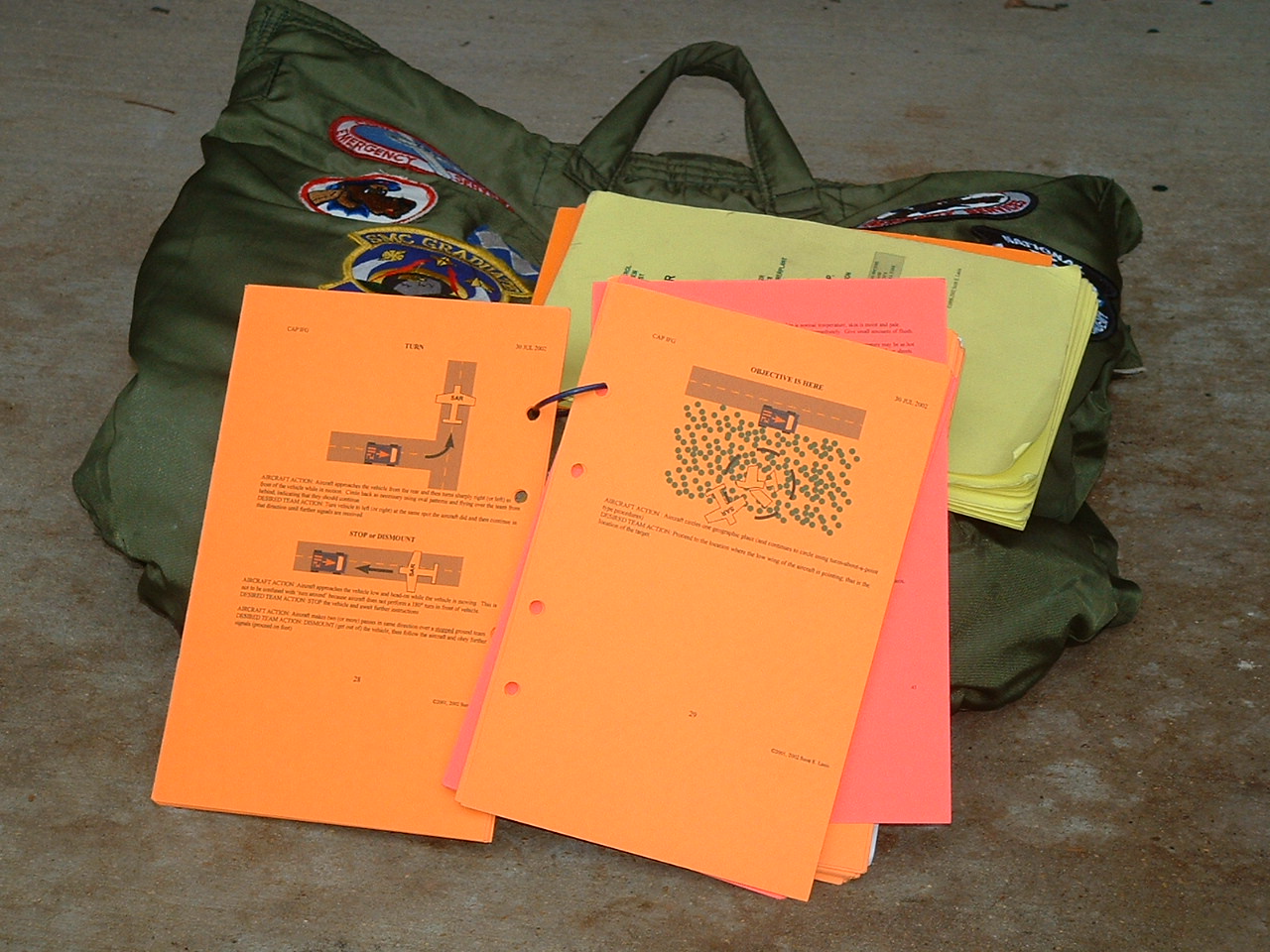 |
SHEET PROTECTOR METHOD
- This method has a higher initial cost, but it will
be much easier to replace pages that are damaged or have
changed.
- Print out pages on regular bond paper using the "two
pages per sheet" option.
- If your computer software or printer is not capable
of printing 2 pages per sheet, print out normally (1
page per sheet) and take it to a good copy shop and
explain what you want. You might also want
to put the fild on a CD or on a thumb drive as most copy shops do better from an
electronic copy anyway.
- Fold each sheet in half and place in the appropriate
sheet protector.
- You can print two copies of the guide (in the method
described in the card stock method) instead of folding.
- You will want C-Line's 8˝
by 5˝
sheet protectors, product number 62058. You can
reach C-Line at www.c-lineproducts.com or by calling 1-888-860-9120.
At time of publishing, the cost for a box of 50 sheet
protectors was $15.20 (plus shipping). You will
require approximately 75 sheet protectors (a box and a
half) to complete your inflight guide.
- Construct a plastic cover by using a heavy plastic
folder or a three-ring binder. Simply cut two
pieces of plastic to size and use a hole punch to match
the holes in the sheet protectors. If desired, you
can mark the cover with a permanent marker and decals.
- Add three loose rings to hold the guide together.
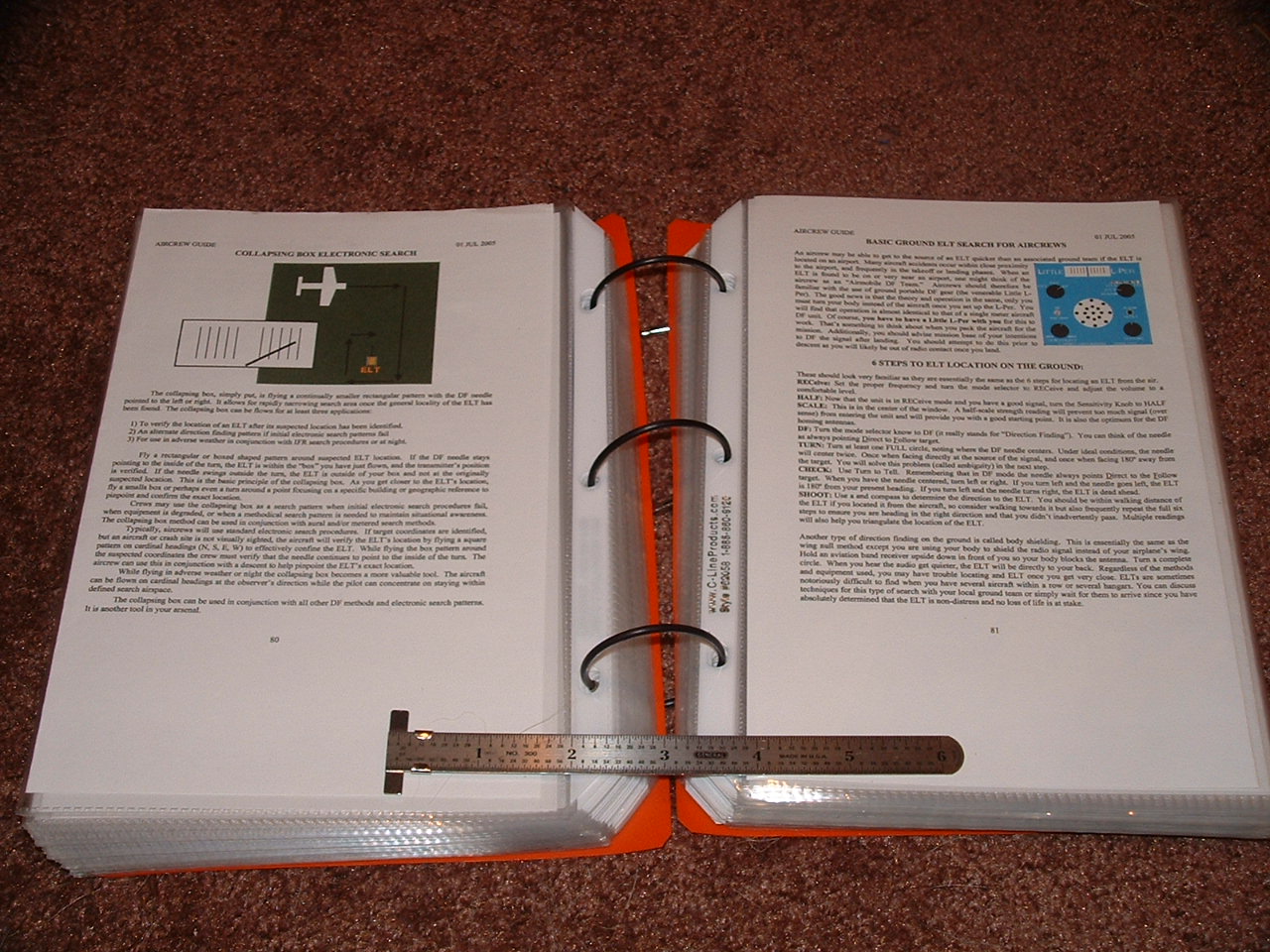
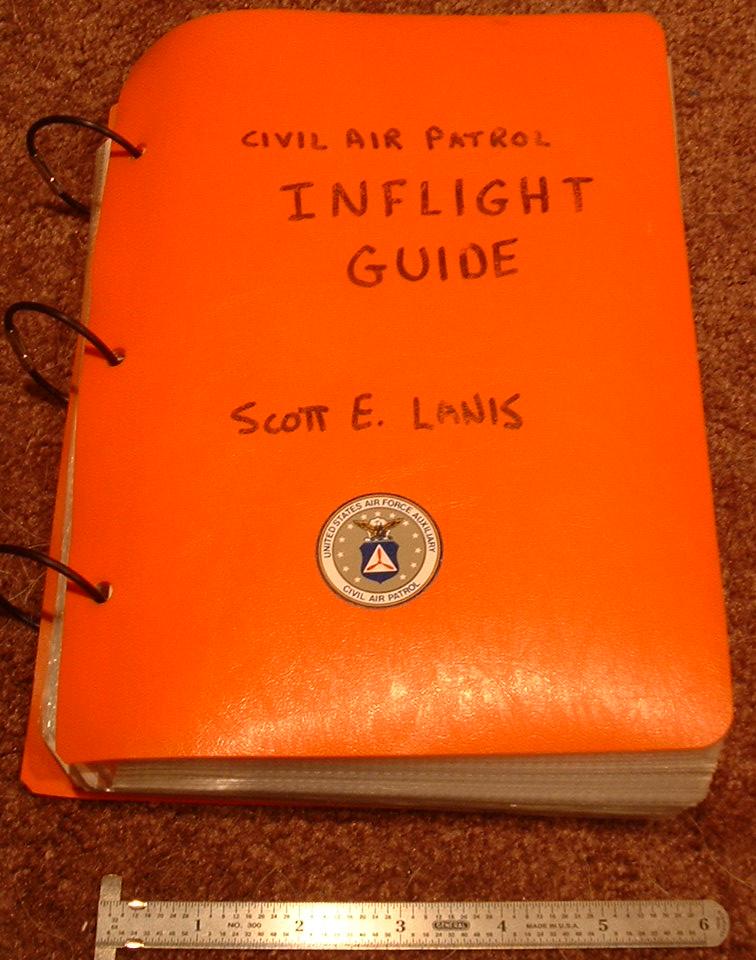
- Alternative method: some individuals prefer to use
the Air Force style "flight crew check lists" to
complete their guide. Very few USAF aircrews still
use this style binder any more because you can't put
"normal" sized paper in the sleeves, even when folded in
half. This necessitates cutting each sheet of
paper before you put it in a sleeve. Furthermore,
ink tends to transfer on to the sleeves and leave a
permanent impression. This only allows you to use
each sleeve once.
- This type of checklist binder can be purchased for
a$9.60 from the CAP Vanguard store. The product ID
is 1209. The checklist only includes 25 pages, and
you will need about 75 pages--so you'll need three.
They can be found on other websites for about $13, with
additional pages $0.50 apiece. You may also be
able to find the checklist binders at AAFES Military
Clothing stores. This is an authorized item to be
purchased by CAP members. Each binder of 35 costs
about $12.
- You can see that it would be about the same price to
buy 100 of the c-line sheet protectors, and you will
likely be much more happy with the results.
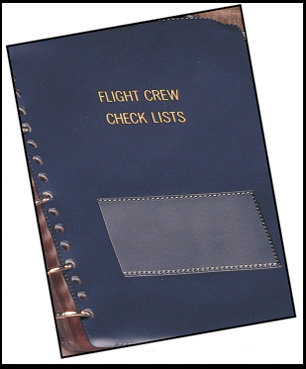 |
-
In order to make the printing instructions listed below easier,
highlight and copy the text of the print task you wish to
accomplish. Then paste it into the "print pages:" line in your
print setup. Adobe Acrobat, however, does not allow robust page
selection such as suggested below. MS Word does, however (the
above documents are not readable in Word, though). The page
printing orders listed below have already been accomplished for you
in the odd/even files listed above, and are listed here for your
reference only.
- The order for printing the guide on a duplexing printer was this
(method abandoned):
1,3,4,2,5,7,8,6,9,11,12,10,13,15,16,14,17,19,20,18,21,23,24,22,25,27,28,26,29,31,32,30,33,35,36,34,37,39,40,
38,41,43,44,42,45,47,48,46,49,51,52,50,53,55,56,54,57,59,60,58,61,63,64,62,65,67,68,66,69,71,72,70,73,75,
76,74,77,79,80,78,81,83,84,82,85,87,88,86,89,91,92,90,93,95,96,94,97,99,100,98,101,103,104,102,105,107,
108,106,109,111,112,110,113,115,116,114,117,119,120,118
- The following are all of the odd-numbered pages, like those
above:
1,3,5,7,9,11,13,15,17,19,21,23,25,27,29,31,33,35,37,39,41,43,45,47,49,51,53,55,57,59,61,63,65,67,69,71,73,
75,77,79,81,83,85,87,89,91,93,95,97,99,101,103,105,107,109,111,113,115,117,119,121,123,125,127,129,131,
133,135,137,139,141,143,145,147
- For even numbered pages, arrange the documents so you are
printing right-side-up on the back, and print in the following
strange order (even pages above):
4,2,8,6,12,10,16,14,20,18,24,22,28,26,32,30,36,34,40,38,44,42,48,46,52,50,56,54,60,58,64,62,68,66,72,70,
76,74,80,78,84,82,88,86,92,90,96,94,100,98,104,102,108,106,112,110,116,114,120,118,124,122,128,126,
132,130,136,134,140,138,144,142,148,146
|